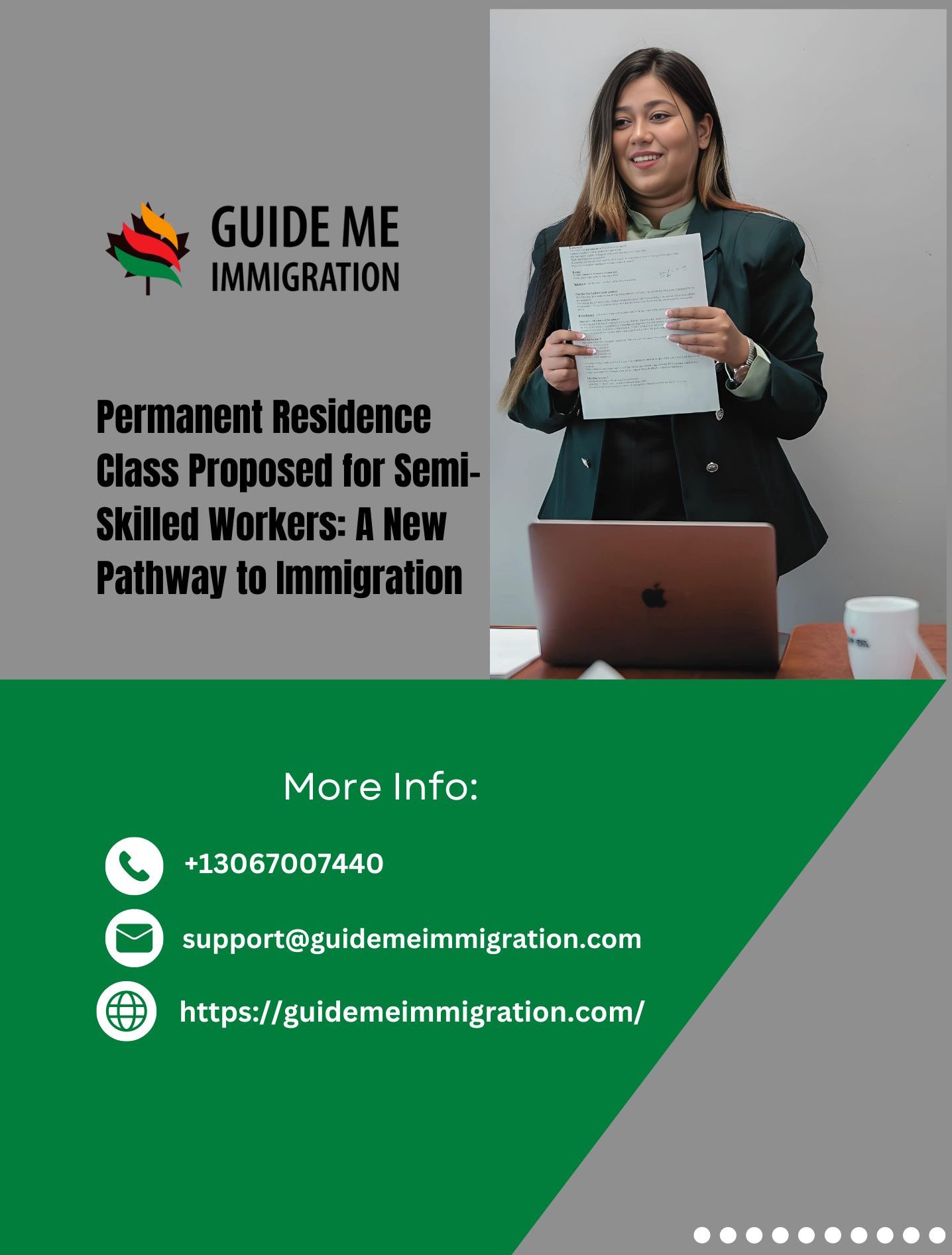Permanent Residence Class Proposed for Semi-Skilled Workers: A New Pathway to Immigration
The landscape of Canadian immigration is poised for a significant shift as Immigration, Refugees and Citizenship Canada (IRCC) has proposed an amendment to the Immigration and Refugee Protection Act (IRPA). This amendment aims to introduce a new permanent economic immigration class designed for semi-skilled workers whose experience and training fall under the Training, Education, Experience, and Responsibilities (TEER) levels 4 and 5. This initiative marks a pivotal step towards diversifying Canada’s immigration pathways and addressing labor market demands.
Understanding the TEER System
Canada’s TEER system, implemented as part of the National Occupational Classification (NOC) system update in 2022, categorizes occupations into six TEER levels. This new classification replaces the previous skill levels, providing a more nuanced understanding of job requirements:
- TEER 0-3: These levels typically require a post-secondary education or apprenticeship.
- TEER 4: Occupations in this category usually require a high school diploma and may involve on-the-job training.
- TEER 5: This level includes jobs that typically require no formal education but may need some short-term work experience.
Historically, occupations falling under TEER 4 and 5 have faced challenges in securing pathways to permanent residency through federal economic immigration programs like Express Entry. As a result, many newcomers working in these roles often struggle to transition from temporary to permanent resident status, adding to the increasing number of temporary residents in Canada.
The Current Landscape of Temporary Residents
Statistics Canada has highlighted a worrying trend: an increasing number of temporary foreign workers (TFWs) and international students are moving into low-skilled industrial sectors, particularly in the accommodation, food services, and retail trade. This shift presents various challenges, including:
- Low Earnings: Many workers in these sectors face lower wages, which can hinder their ability to integrate fully into the Canadian economy.
- Slow Earnings Growth: The limited upward mobility in these occupations can result in prolonged periods of economic instability for these workers.
In response to these challenges, the proposed permanent residence pathway aims to alleviate the pressure faced by these individuals and help stabilize their status in Canada.
The Need for Change
The need for a new permanent resident pathway for TEER 4 and 5 occupations is underscored by the rising number of temporary residents, which reached over 2 million in 2023. The IRCC has acknowledged that these numbers are no longer sustainable for Canada’s economy, emphasizing the need to reduce reliance on temporary residents.
Minister of Immigration, Refugees and Citizenship Marc Miller noted that Canada has successfully recovered 138% of the jobs lost during the COVID-19 pandemic, indicating a robust labor market. To ensure continued growth, it is crucial to transition temporary residents into permanent status.
Key Features of the Proposed Pathway
While the specific details of the new permanent residence class will be outlined in upcoming ministerial instructions, several key features have been indicated:
- Diverse Skill Recognition: The new class aims to recognize and embrace a broader range of skills and experiences, allowing individuals in TEER 4 and 5 occupations a pathway to permanent residency.
- Targeted Economic Impact: By facilitating the transition of semi-skilled workers into permanent residents, the IRCC aims to address labor shortages in critical sectors, bolstering the economy.
- Integration Support: New permanent residents will likely benefit from additional resources and support systems designed to enhance their integration into Canadian society, thereby contributing to economic growth.
The Role of Domestic Draws
To stabilize the number of temporary residents, the IRCC has also announced plans to increase the number of “domestic draws.” This strategy focuses on converting existing temporary residents into permanent residents before inviting new foreign nationals to Canada.
This shift is evidenced by the uptick in Express Entry draws aimed at candidates with provincial nominations and those applying through the Canadian Experience Class. In July alone, IRCC issued 14,575 invitations to apply for permanent residency to individuals already living and working in Canada, demonstrating a commitment to prioritizing those who have already integrated into the Canadian labor market.
Anticipated Changes to Immigration Levels
The proposed permanent residence class aligns with the IRCC’s broader strategy to manage temporary resident levels effectively. For the first time, the IRCC has imposed a cap on the number of international student applications it will process, signaling a shift in focus towards sustainable immigration levels.
The forthcoming Immigration Levels Plan for 2025-2027, expected to be released by November 1, will further outline the IRCC’s approach to balancing temporary and permanent residents, ensuring that Canada continues to attract a diverse and skilled workforce while maintaining economic stability.
For those interested in exploring their eligibility for Canadian immigration, it is vital to consult with qualified immigration professionals or stay updated with the latest information from the IRCC. The evolving landscape of Canadian immigration offers new opportunities, and being well-informed is the first step toward a successful transition to permanent residency.
About Guide Me Immigration Ltd
At Guide Me Immigration Ltd, we are dedicated to helping individuals navigate the complexities of the Canadian immigration system. Our team of experienced professionals is committed to providing personalized guidance tailored to your unique situation. Whether you are a semi-skilled worker seeking permanent residency or exploring other immigration pathways, we are here to assist you every step of the way.
Contact Us:
guidemeimmigration.com
Visit Our Other Company:
• Go-Get Inc
• Go-Get Property Management
Invest in your website’s future with regular maintenance from SaskIT. Let us help you keep your site secure, fast, and user-friendly! 🚀







